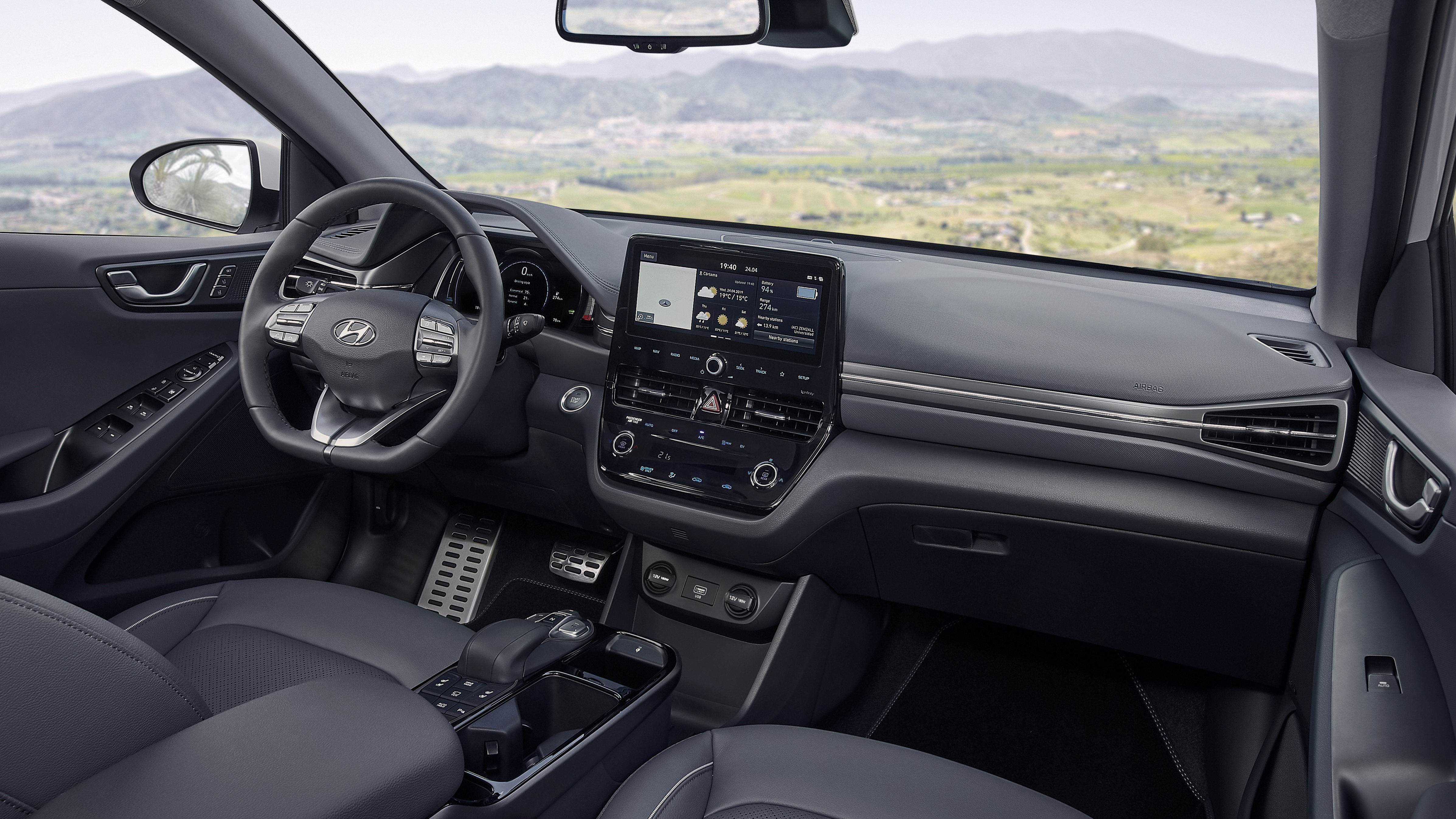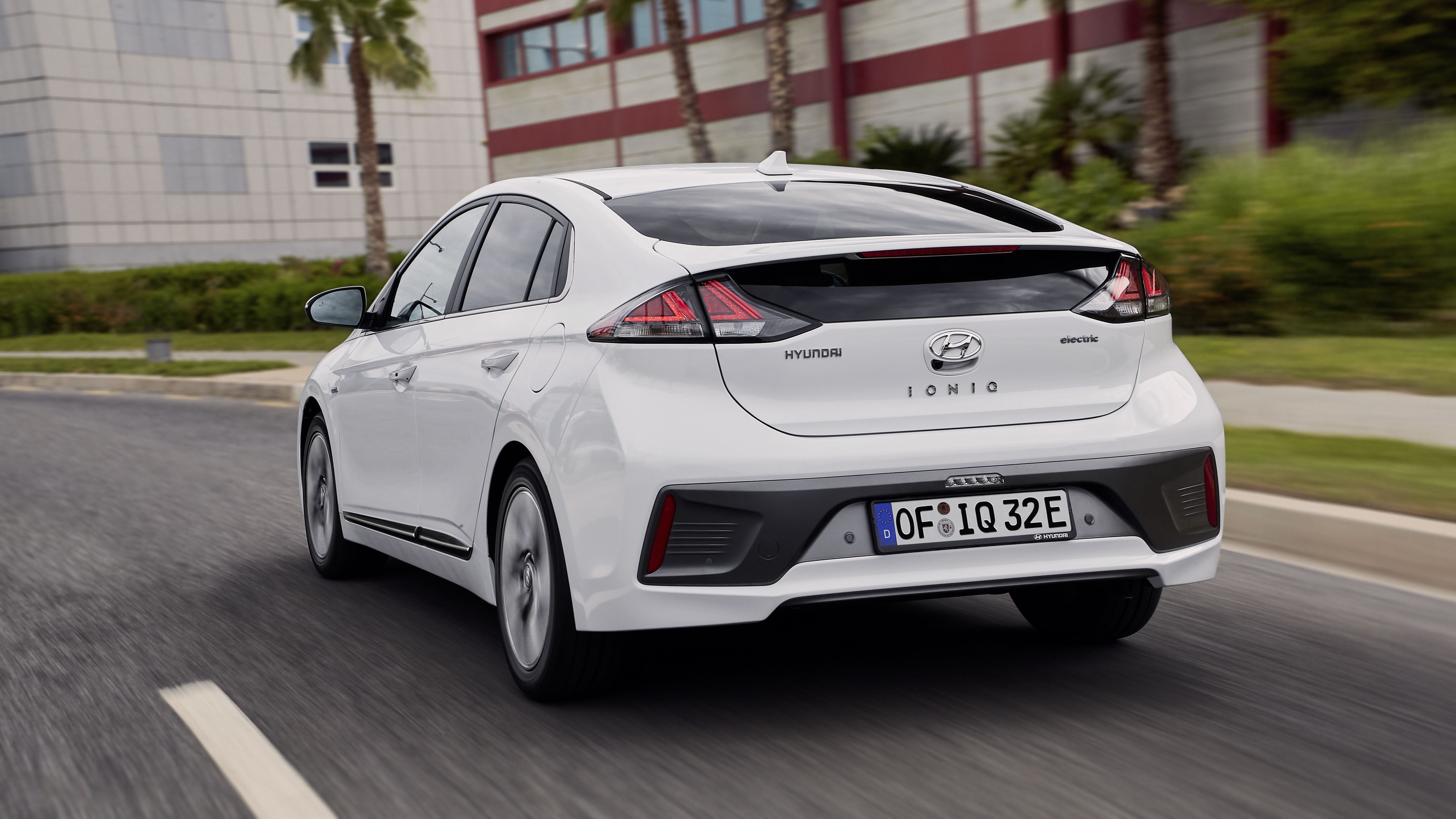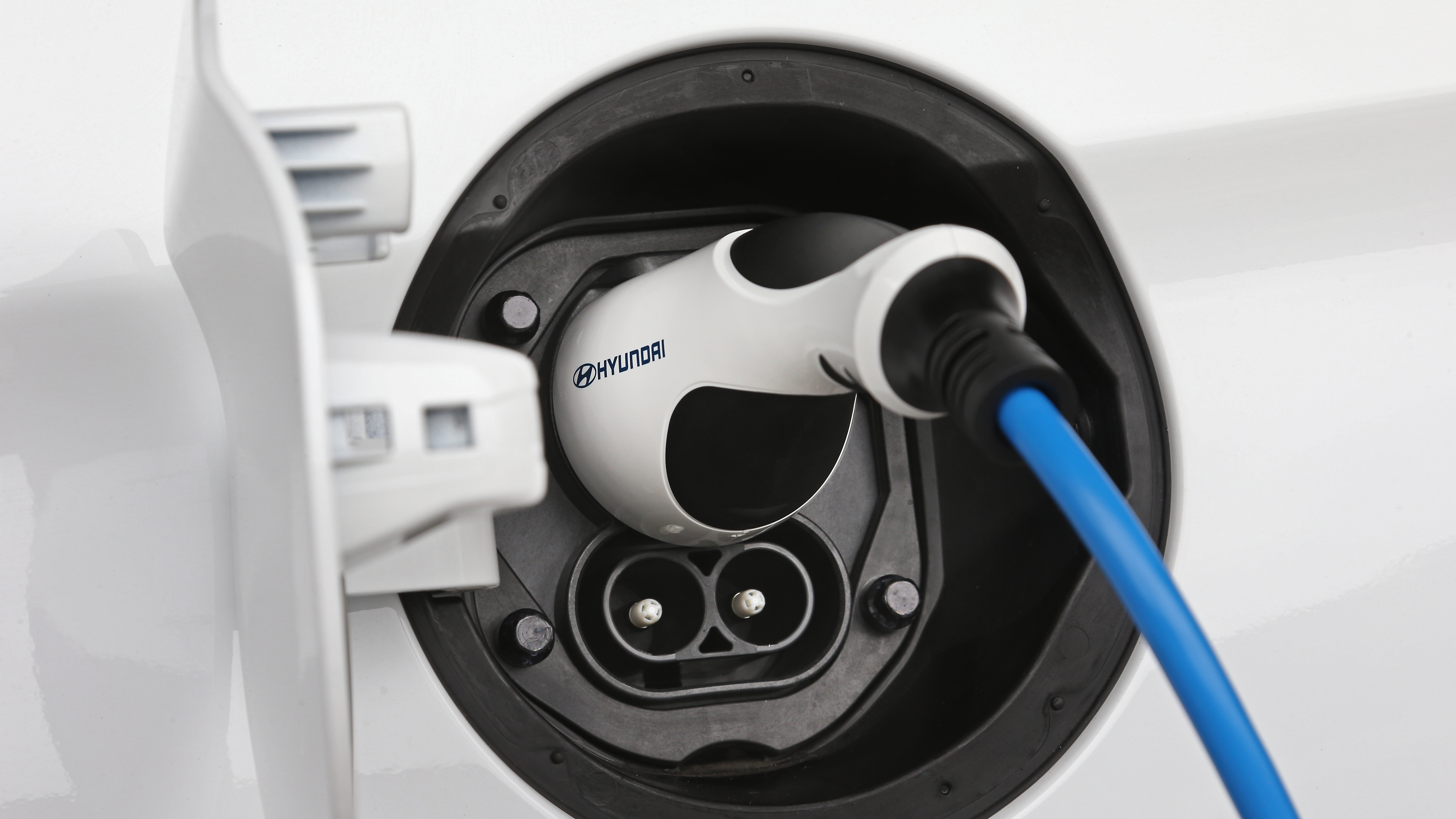
Hyundai Ioniq Electric review
Interior
What is it like on the inside?
Here’s where most of the styling changes have happened. Just like the hybrid versions – and as with other new Hyundais – there’s brand-new dashboard design with upgraded materials, lighting and controls.
At the centre of it all, sitting tablet-style above the dash, rather than integrated into it, is a new 10.25-inch split touchscreen. It’s wide, and easily split between different displays. Works well with CarPlay and Android Auto too. Beneath it are physical buttons too, so you don’t have to jab distractedly at the screen just to change the radio station. There’s also a new driver display with fully digital dials too, plus blue ambient lighting for added nocturnal moodiness.
Hyundai’s new Bluelink connectivity is standard on both models, and uses an embedded 4G modem to give you live info on traffic, charging stations, speed camera locations and suchlike. You can also check in on the car remotely to monitor its charge level, and set the heater while you’re still in bed (so it’s pre-warmed on cold mornings, or vice versa). There’s cloud-based voice control, and a multi Bluetooth function that allows you to connect to two phones at the same time, which definitely won’t cause arguments when choosing whose Spotify to stream.
As for materials, the upper half of the cabin – the bits in your eyeline most of the time – is nice enough, with various soft touch or leather-like fabrics. But lower down, around the gear selector, cupholders door trims, bins the plastics feel cheap and shiny.
Rear passenger space is fine for kids and teens. Adults too, though you might want to stop so they can stretch their legs after an hour or two. The boot is 350 litres – that’s more than a Prius but less than a Golf. There’s no frunk; that’s where the motor goes.
Featured

Trending this week
- Car Review
BMW 1 Series
- Top Gear's Top 9
Nine dreadful bits of 'homeware' made by carmakers






